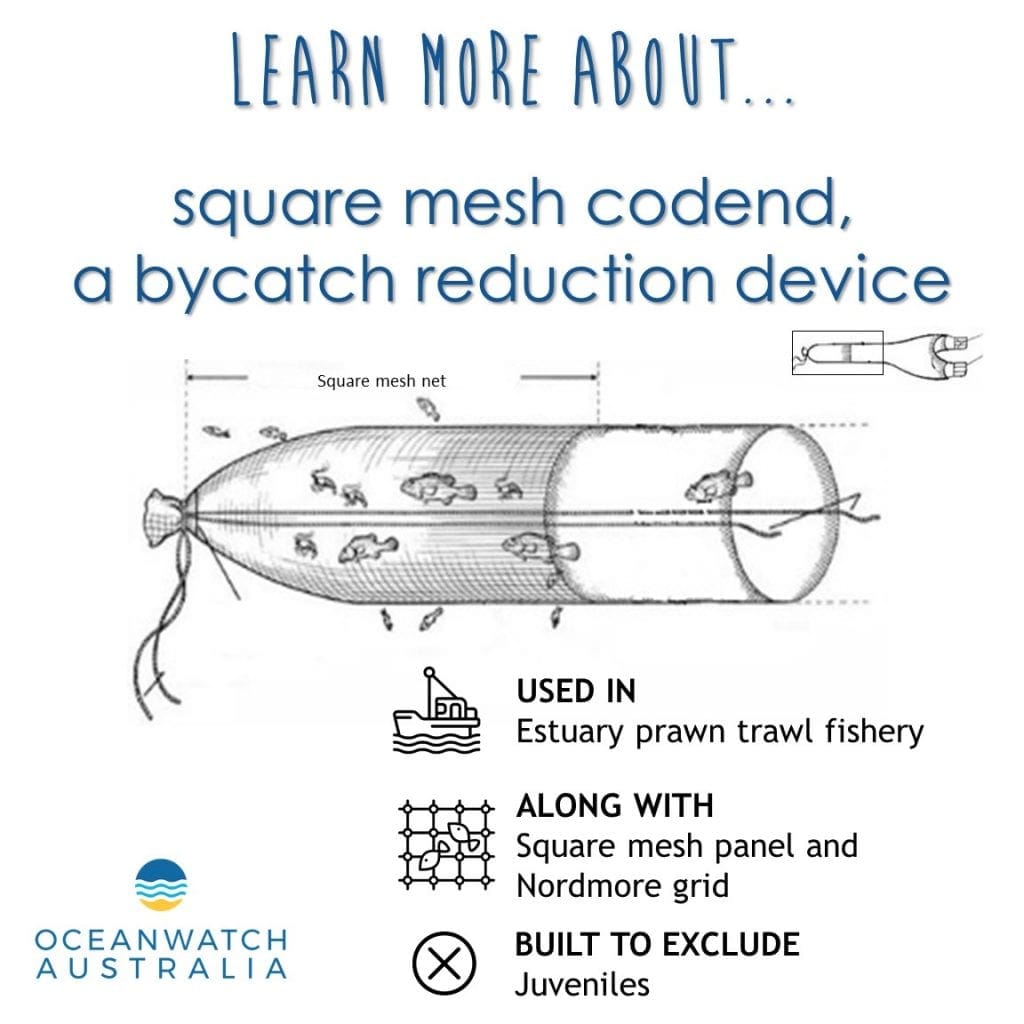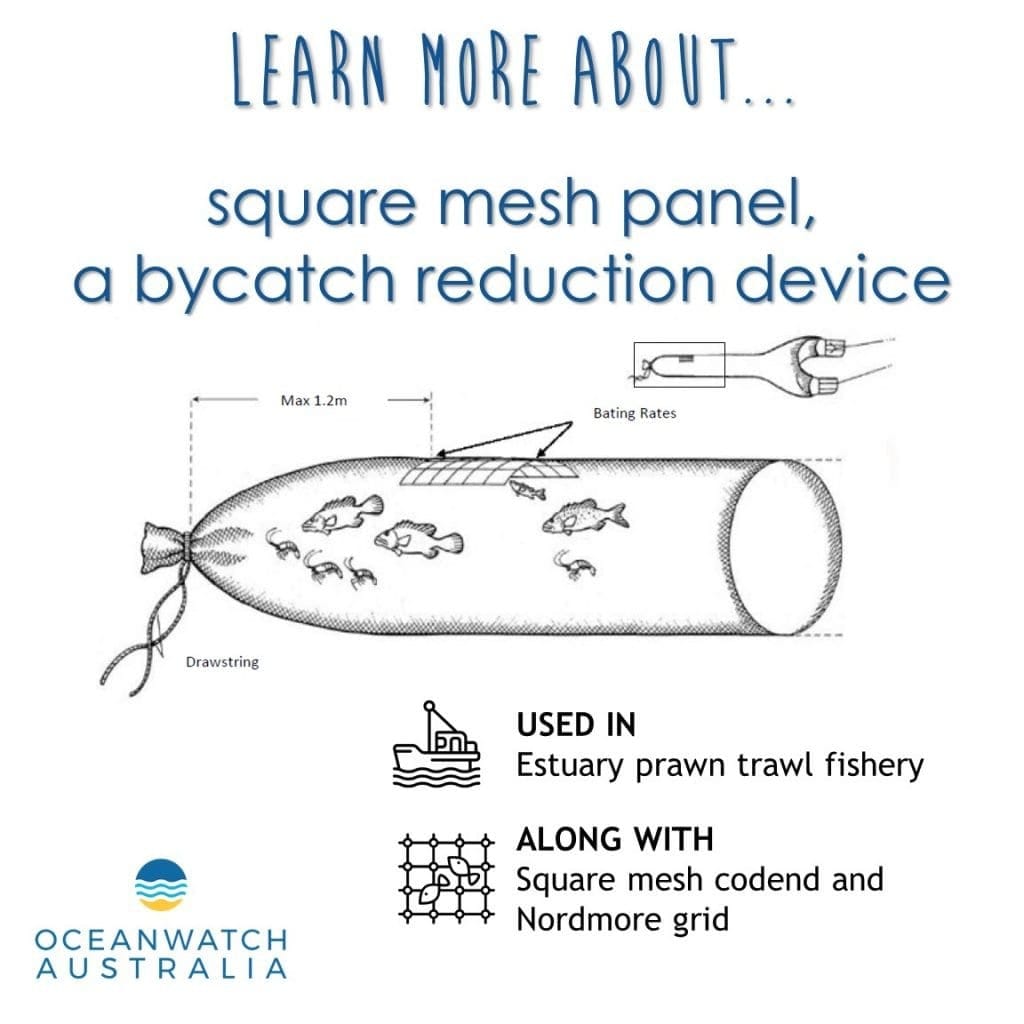Professional fishermen in Australia implement bycatch reduction devices (BRDs) and strategies to minimise impacts on biodiversity, reduce unnecessary handling, and to avoid catching tomorrow's catch today.
The definition of Bycatch is ‘the unintentional capture and discarding of non targeted catches’. The term bycatch is also used to describe catches of undersize fish, inedible species, seafood without market demand or prohibited for sale.
Australian fishermen strive for continual improvements regarding their environmental performance, contributing funds and time each year to advance fisheries research. This work has resulted in Australia being recognised internationally for using some of the most environmentally sound technologies available. Experienced fisher's understand the characteristics of their fishing gear and combined with local knowledge bycatch can be minimised.
OceanWatch Australia's SeaNet program was Australia's national environmental fisheries extension program for over 10 years. SeaNet officers worked with the seafood industry around Australia to advance environmental best practice, and helping to ensure responsible and sustainable fishing practices.
ESTUARY PRAWN TRAWL
Trawling has been heavily researched in Australia, resulting in major improvements to minimise incidental catches and potential for interactions with threatened, endangered and protected species. Trawl fisheries in Australia are required to use regulated bycatch reduction devices, known as BRDs. BRDs maximise the potential for fishing gears to avoid non-targeted species.
Minimising the unintended capture of marine animals is a crucial part of professional fishing, it not only reduces the workload required to remove bycatch from the fishing haul but more importantly it minimises the impacts on marine ecosystems. These bycatch reduction devices help to ensure that the seafood that ends up our plate is sustainable.
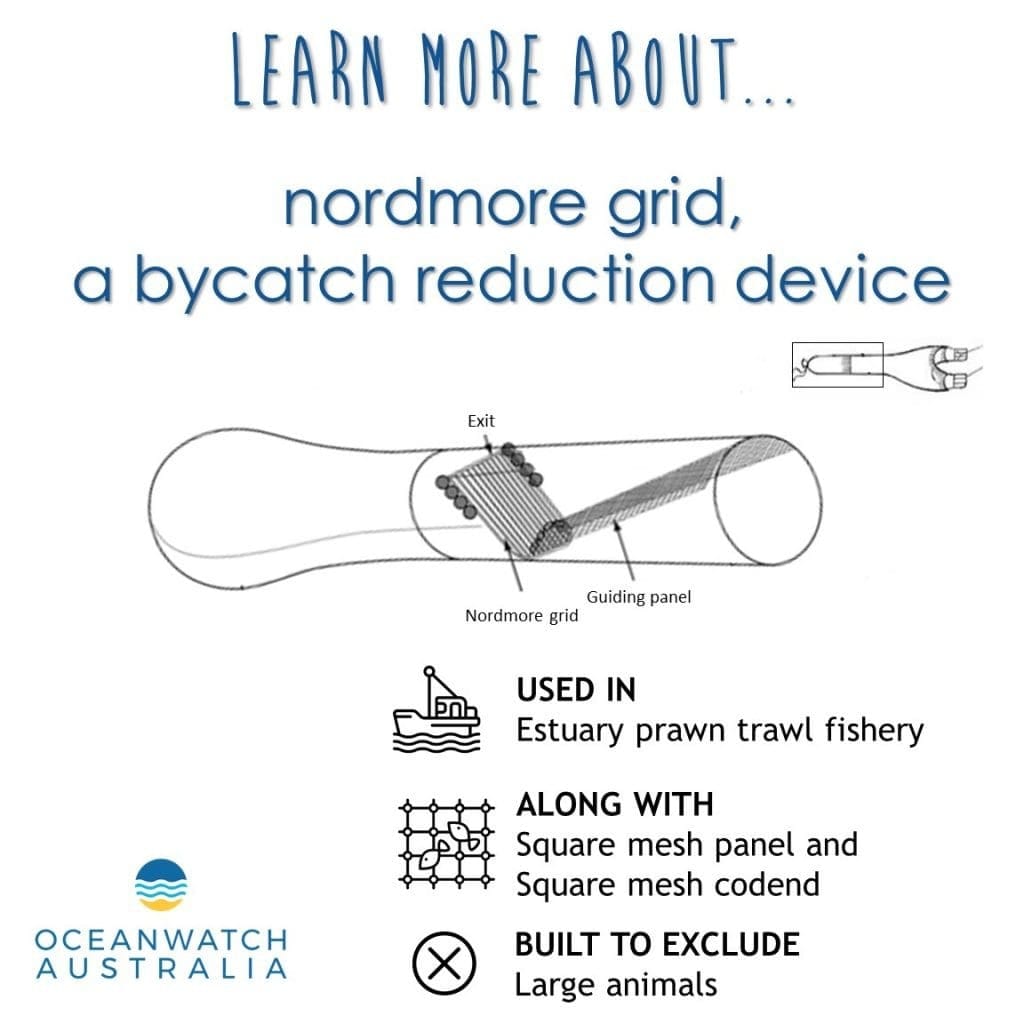
A nordmore grid is another bycatch reduction device commonly used for estuary prawn trawling. A guiding panel directs the catch toward the bottom of the grid. Large animals are guided by the grid towards an escape opening at the top of the codend, whilst prawns pass through the grid and enter the codend.
OCEAN BEACH HAUL
Beach hauling was one of the first methods of fishing carried out along ocean beaches by European settlers in Australia and is part of the history of many communities along the coast.
The ocean hauling fishery provides the community with fresh local seafood, bait and high value exports.
Professional fishermen use a net that is deployed and retrieved back to a beach. Fishers catch a variety of species throughout the year, mainly Sea mullet, Australian salmon, Luderick, and Yellowfin bream. Catches are processed both for human consumption and bait for recreational fishers.
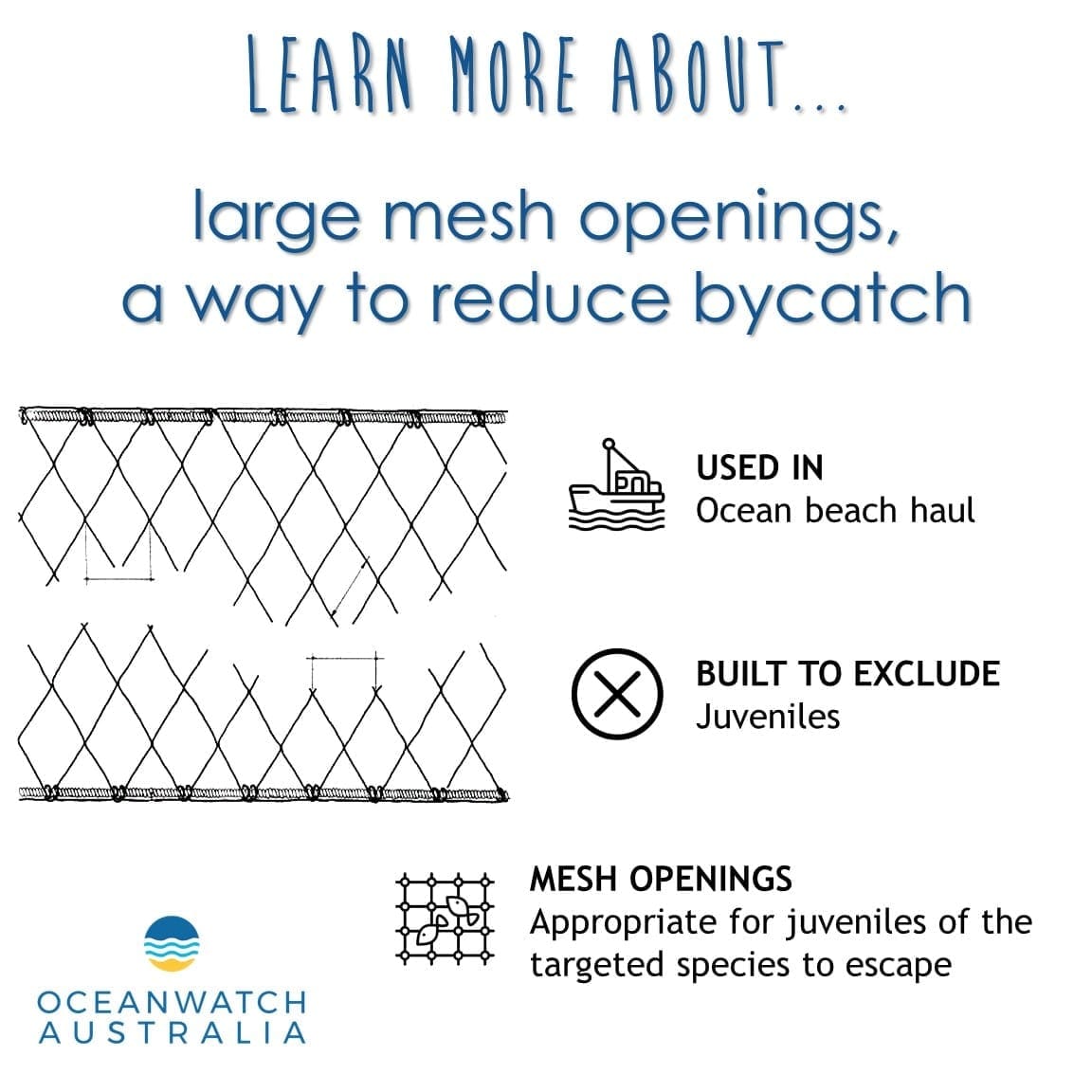
FISH TRAWL
To minimise bycatch in Australian fish trawl fisheries, mesh size in fishing gears are regulated to reduce the capture of non-target species and juveniles.
Additionally, since the 1980’s hoppers have been used in Australian trawl fisheries to improve quality, reduce handling and increase survival of any non-retained catches.
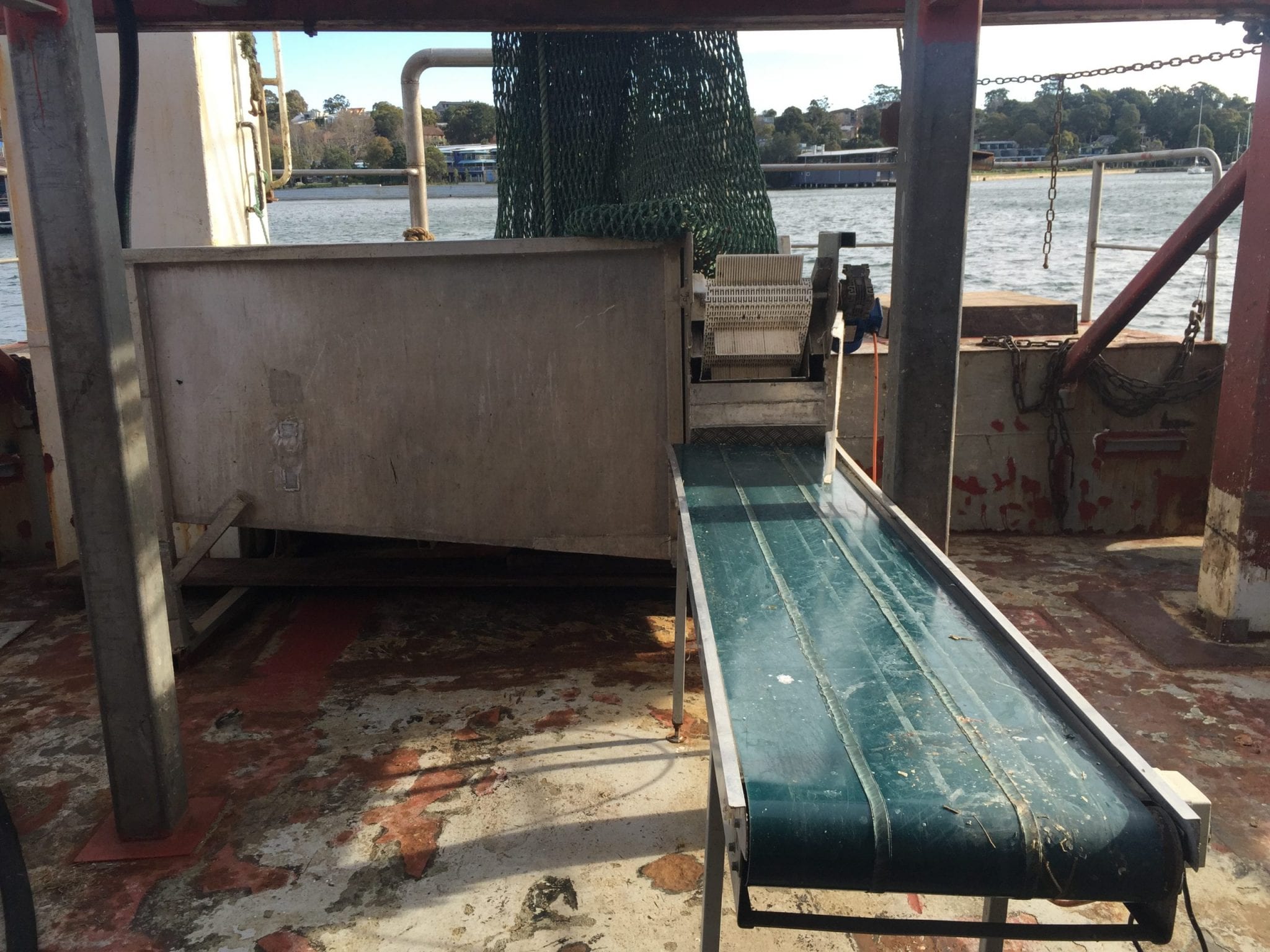
A hopper on a NSW fish trawler
